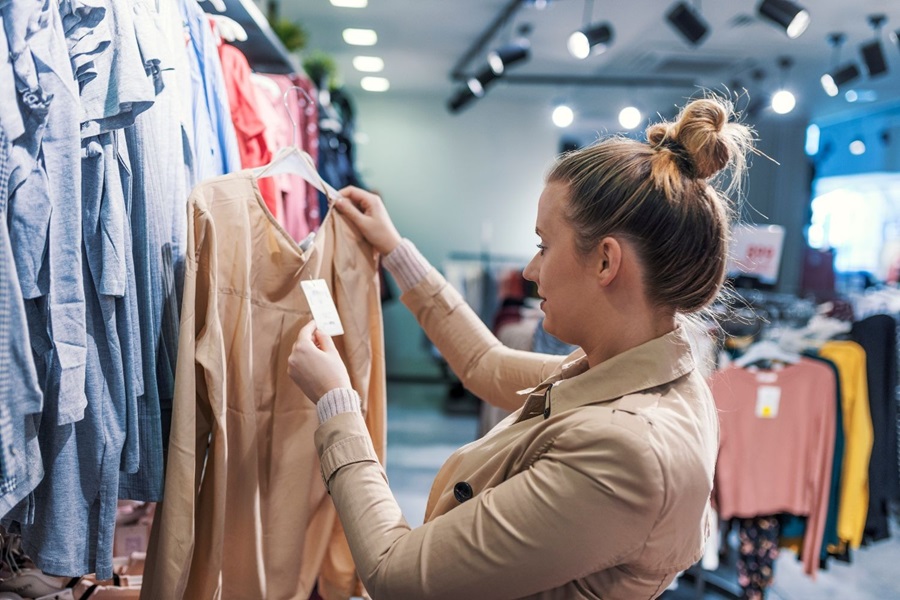Making fashion sustainable is a complex issue, and there are no easy answers. We know that 63% of consumers want fashion brands to show their commitment to adopting more sustainable behaviours, but in an industry where every potential route carries its own challenges and contradictions, the actions retailers should take are not always clear.
Of those shoppers who do not see fashion as one of the most concerning industries in terms of environmental impact, 82% do expect fashion retailers to adopt more sustainable behaviours. In short, all eyes are on retailers’ sustainability strategies right now and it’s more important than ever to get these decisions right.
Putting a foot in the right direction
Fashion is one of the world’s biggest polluters, but only one in eight consumers can name a retailer behaving sustainably. This is in contrast with the world of FMCG where ‘sustainability’ has long been a buzzword, with excessive use of polluting plastics and packaging at the eye of the storm.
In 2015, calls for change reached fever pitch and the first seismic shift saw shoppers shouldering the burden of more sustainable consumption with the arrival of the plastic bag charge. Whilst the media reported some anger amongst consumers, broadly it felt as though people were waking up to the realities of a ticking environmental time bomb. People were demanding change now.
Whilst the same appetite for change exists amongst fashion consumers, the fever pitch moment for the industry still rests just beyond the horizon, and partly this is due to the war on plastic having no obvious counterpart in fashion. More than two in three British consumers believes that plastic waste is one of the major global challenges, and thus the long road to ‘becoming a more sustainable retailer’ has a clear starting point for FMCG. In fashion, it is a slightly different story.
Cottoning on to a good thing
Let’s take organic cotton as an example. Cotton is the most popular fabric all over the world, and accounts for more than half of all the world’s fibre needs. In its 2018 annual report, fast-fashion retailer H&M laid out plans to transition to 100% sustainable cotton by 2020, defining sustainable as using ‘only recycled or organic fibres sourced through the Better Cotton Initiative’, avoiding genetically-modified cotton, which damages soil through high levels of chemical use. It was exciting and felt like a bold pledge in the face of a generally slow-moving industry effort to commit to change. In the words of the Better Cotton Initiative: ‘H&M are making sustainability fashionable,’ and it is true: 20% of consumers state that use of organic fibres is one of the top three most important behaviours a retailer can adopt.
However, organic cotton is problematic too. According to Cotton Inc. – a non-profit organisation funded by cotton growers – it requires 290 gallons of water to grow enough genetically modified cotton to produce a T-shirt, and 660 gallons to produce it using organic cotton instead. So, in a world where fashion is allegedly responsible for one tenth of all water used industrially, how do we respond to this double bind?
And this is not the only example of the tensions and contradictions at play:
When shopping for fashion, 31% of us look for clothing which is made in the UK, but 70% continue to place price in the top three factors when making a purchase. 42% of us state we want clothing sold by a retailer we consider to have good ethical credentials, but only 34% frequently or always avoid buying from brands considered fast fashion. In short, across all aspects of fashion sustainability, getting it right can be a minefield for retailers.
Taking targeted action on sustainability
So herein lies the true question: if we know that most consumers are not prepared to pay top-rate for the final garment on the hanger, and that not every retailer can market itself with sustainability as its USP, how can retailers ensure they are taking action based on what matters most to their own shoppers? What sustainability considerations matter more to a Boohoo shopper than those of John Lewis? If the dream of a 100% sustainable high street fashion retailer is a myth, what do we prioritise?
Across the next few months we will look to address these difficult questions, and attempt to reframe thinking around how retailers can best approach their sustainability strategy in 2020. It is true that we are perched on the intersection between historically low levels of fashion spending, and historically high levels of available information, but this need not necessarily spell bad news. Those retailers who are first to lay claim to a new ‘Our Consumer First’ approach to these questions are likely to be those who see the greatest successes from it.

